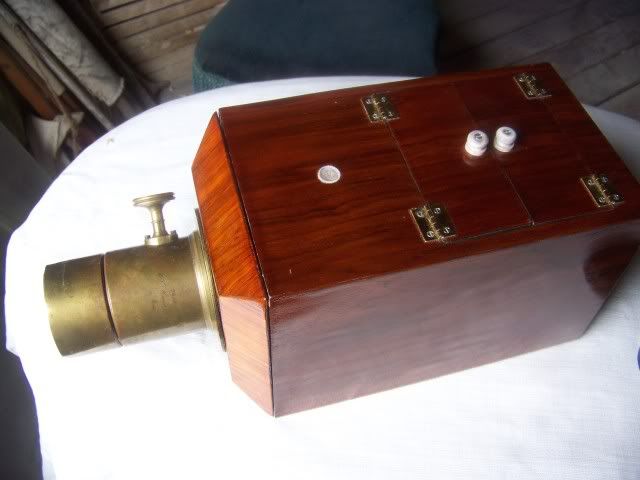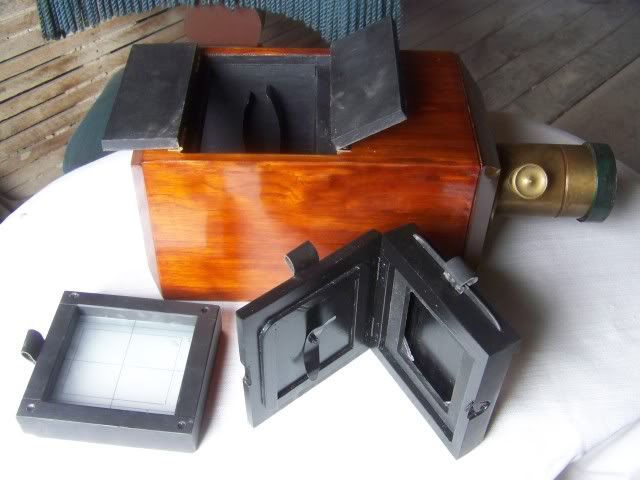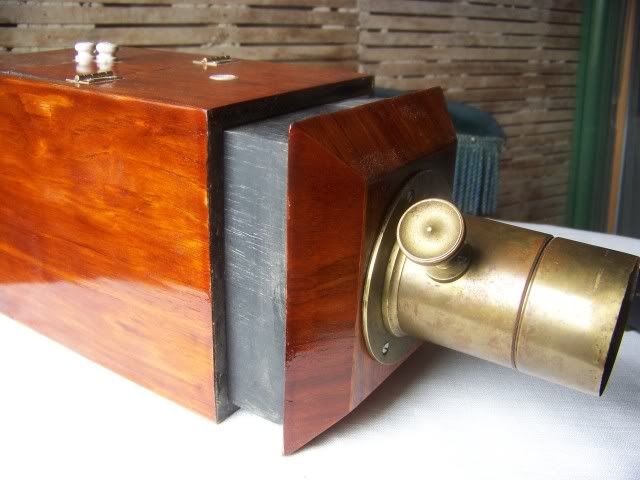If you wanted to take a coin photo in 1843 you would have used *this*
I just finished it up and Im proud of it!
1843 chamfered front American daguerreotype camera



1843 chamfered front American daguerreotype camera



0
Comments
<< <i>I just finished it up and Im proud of it!
1843 chamfered front American daguerreotype camera
These were used for my senior class pictures in highschool
That is a cool device you got their. Do you have any pictures of the photos or tin types it takes?
<< <i>This thread is worthless without pics of the coin photos it takes.
That is a cool device you got their. Do you have any pictures of the photos or tin types it takes? >>
Daguerrotypes were taken on activated copper plates and I imagine those are difficult to get. I imagine the development chemicals aren't easy to get either.
<< <i>I'd actually be quite interested to see some coin photos from that thing. >>
Edit: I take back what I said about not being able to focus up close. I don't know what optics it has but looks to have a lot of focal travel.... --Jerry
I have done wet plate shots of coins, once I used a print from a shot of a double eagle as a cdv card, it was my "gift certificate" good for $20.
edited to add";
ohhh noooooo beg to differ once the camera is focused, a dag plate will beat anything on crispness of resolution. the image is made up of globules or mercury 1/200 of a mm in diameter.
the knobs are turned antler. It is made on a body of spanish cedar, with indian rosewood veneer. just like the orginals.
-Paul
I love these things
You could have bought your daguerreotype materials from Scovill Manufacturing Co.link here
This is their Merchant Card(business card)
Stefanie
.
CoinsAreFun Toned Silver Eagle Proof Album
.
Gallery Mint Museum, Ron Landis& Joe Rust, The beginnings of the Golden Dollar
.
More CoinsAreFun Pictorials NGC
Is the lens from an original? Looks old.
Regards,
John
1947-P & D; 1948-D; 1949-P & S; 1950-D & S; and 1952-S.
Any help locating any of these OBW rolls would be gratefully appreciated!
Sounds like the images were more dependent upon the lens since compound-lens technology was still in it's infancy.
A close up of a coin, with the lens pulled away from the film plane, would be about 10 seconds in average light.
BTW that lens on the open market today is about 800$. It cost, when new, in the 1840's, about $100. (very expensive)
For those interested, Joseph Saxton, who worked at the US Mint in Philly (1837-1843) took the oldest known Daguerreotype image in America. From his office on the second floor of the Mint, he pointed his camera to the northwest and made a shot of the Central High School for Boys, and the Pennsylvania State Arsenal buildings in October 1839.
He and his fellow workers (Gobrecht, Du Bois, J.R. Eckfeldt, Peale, etc.) read about Daguerre's process, and assembled the necessary eqipment (from Mint materials) and eventually developed a relatively clear image which is now located in the Historical Society of Pennsylvania.
Saxton's image was not the first image made in America, but it is the oldest known survivor.
Michael Kittle Rare Coins --- 1908-S Indian Head Cent Grading Set --- No. 1 1909 Mint Set --- Kittlecoins on Facebook --- Long Beach Table 448
-D
-Aristotle
Dum loquimur fugerit invida aetas. Carpe diem quam minimum credula postero.
-Horace